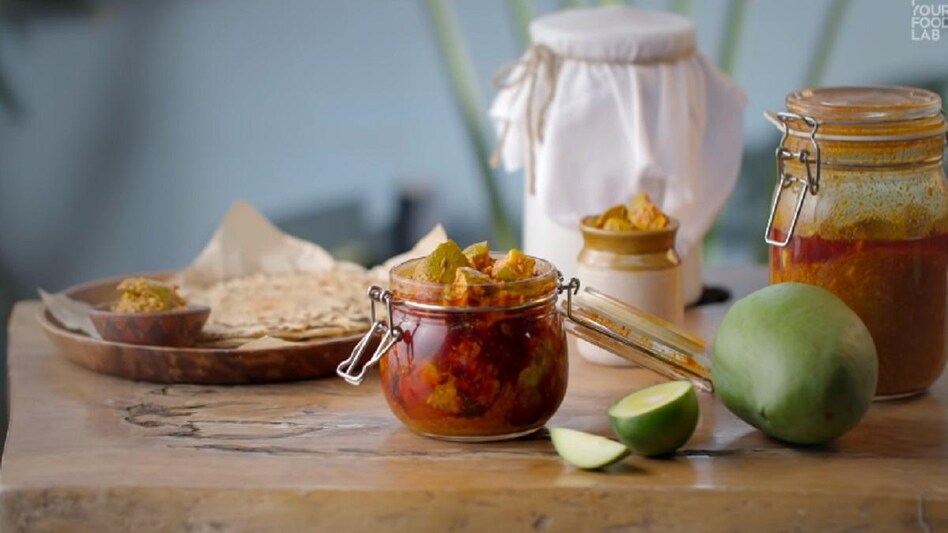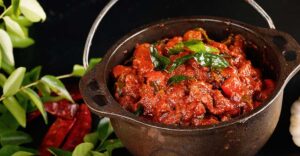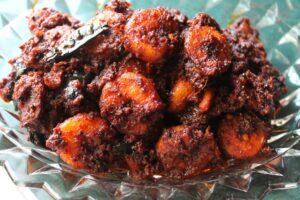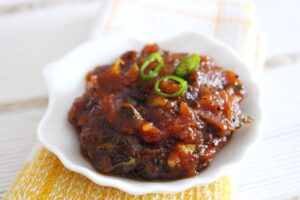The culinary heritage of Kerala, a state in southern India, is renowned for its rich and diverse flavors. Among the countless mouthwatering delicacies, one that stands out is the traditional Kerala mango pickle. Bursting with tangy and spicy goodness, this pickle is a beloved accompaniment to meals and a staple in Kerala households. In this blog post, we’ll delve into the delightful world of Kerala mango pickle, its preparation, and the cultural significance it holds.
- A Perfect Blend of Flavors: Kerala mango pickle is a tantalizing combination of raw mangoes, aromatic spices, and a unique blend of oils. The pickle’s distinct flavor profile is derived from a medley of spices, including mustard seeds, fenugreek, asafoetida, turmeric, and red chili powder. This amalgamation creates a harmony of flavors, resulting in a pickle that is both tangy and spicy, with a hint of sweetness.
- Preparation Process: The process of making Kerala mango pickle involves meticulous steps to achieve the perfect balance of flavors. It typically begins by selecting unripe mangoes that are firm and sour. These mangoes are then peeled, deseeded, and cut into small pieces or thin strips. The mango pieces are then sun-dried to remove any excess moisture, ensuring a longer shelf life for the pickle.
Meanwhile, a mix of spices is dry-roasted to release their aromas and enhance their flavors. The roasted spices are ground into a coarse powder. In a separate pan, oil is heated and tempered with mustard seeds, fenugreek seeds, and asafoetida. The dried mango pieces are combined with the freshly ground spice mix, turmeric, red chili powder, and salt. The tempered oil is added to this mixture, thoroughly coating the mango pieces.
The pickle is then stored in a sterilized glass jar and left to mature for a few weeks. During this period, the flavors blend together, intensifying the taste and transforming it into a delectable culinary delight.
- Cultural Significance: In Kerala, mango pickle holds cultural and sentimental value. It is an essential part of the traditional Kerala sadhya (feast) served during festivals and special occasions. The tangy pickle adds a burst of flavor to the otherwise elaborate vegetarian meal, complementing dishes like rice, sambar, and curries.
Moreover, the art of making mango pickle has been passed down through generations, with each family adding their unique touch to the recipe. The process of making the pickle often involves a collective effort, bringing family members together in a shared culinary experience.
- Health Benefits: Besides its tantalizing taste, Kerala mango pickle offers several health benefits. Mangoes are a rich source of vitamins A and C, dietary fiber, and antioxidants. The spices used in the pickle, such as turmeric, fenugreek, and asafoetida, are known for their medicinal properties. They aid digestion, boost metabolism, and possess anti-inflammatory properties.
However, it is important to consume mango pickle in moderation due to its high salt and oil content. Moderation is key to enjoying this traditional delicacy while maintaining a healthy lifestyle.
Kerala mango pickle is not just a condiment but a cherished tradition that reflects the cultural heritage of Kerala. The tantalizing blend of tangy flavors, the meticulous preparation process, and the sentimental value it holds make it an integral part of Kerala cuisine. So, the next time you indulge in a Kerala feast or simply crave a burst of flavor, reach for the traditional Kerala mango pickle and experience the taste of this culinary masterpiece.




